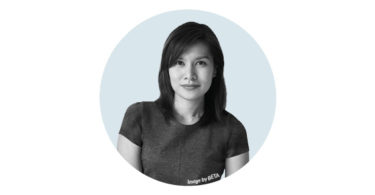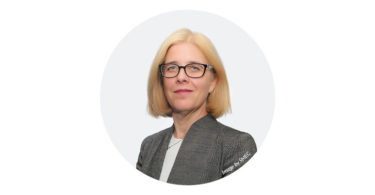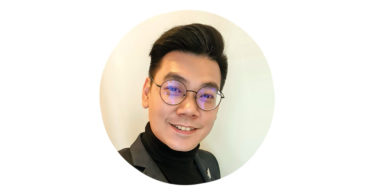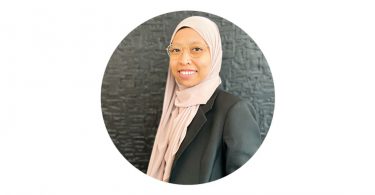Fendarie Su is the founder of Santa Fe Interior Architecture Sdn Bhd, an international award-winning interior design firm. She has experience in crafting distinctive interior solutions and designs and was nominated as one of the Women of Excellence in Malaysia in 2014.
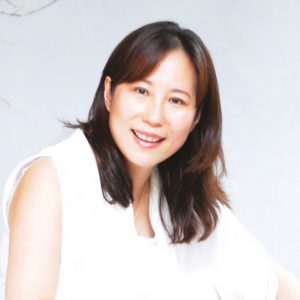 Born and raised in Penang, studied and graduated from Utah State University in the United States of America (USA), Fendarie Su’s interior design career began in the USA, Holland and other countries before settling back in Malaysia.
Born and raised in Penang, studied and graduated from Utah State University in the United States of America (USA), Fendarie Su’s interior design career began in the USA, Holland and other countries before settling back in Malaysia.
She formed Santa Fe Interior Architecture Sdn Bhd (Santa Fe) in 2006, which started from a humble corner in her house. The firm was nominated as one of the top 10 best interior architecture companies in Malaysia. Together with her dynamic team who shares the same design philosophy and values, Santa Fe won seven international awards and 32 local awards for different categories of interior design projects. In 2014, she was nominated as one of the Women of Excellence in Malaysia.
Since the beginning, her vision has been “to heighten value of humanity through the boundless creation of profound design concepts”. From small to 500 million dollar projects, she takes pride in completing the interior design of prestigious projects, such as corporate offices, hotels, institutions, restaurants, spa houses, commercial and mixed-use developments. Examples of such projects included Taylor’s Lakeside University, ViTrox Corporation Berhad, Tropicana Corporation, Herbaline Spa & Hotels, KDU Campus, ECM Libra Investment Bank, Titijaya Group, Mines Corporate and Epsom School. Santa Fe also landed projects in the USA, China, Thailand, Abu Dhabi, Singapore and other regions.
Tell us about your guiding approach to design and in managing clients’ expectations as a director in Santa Fe.
I love to inspire and be inspired. My greatest inspiration comes from my team as we often hold design brainstorming sessions. I look at their ideas from different angles, but the challenge is to gather and align those ideas with the company’s values. These values have been our constant driving force to inculcate current trends as we envisage our clients’ visions and directions.
We help our clients to see beyond the common boundaries and embrace their spaces. Our profound design concept creates values that change their perception of humanity, lifestyle and way of executing the design. We cultivate values in the creation of designs and attainment of client contentment.

Could you give an example of a successful project that you have led from inception to completion?
Over the past decade, we have completed many projects from inception to completion, through working with some of the most prestigious clients across the globe. Some projects started with understanding the clients’ visions and establishing the right concepts and design directions.
Projects that were wholly completed included Taylor’s Lakeside University (800,000 square feet); Herbaline Spa; Café & Hotels (32 branches); ViTrox Corporation Berhad’s office (Phase 1: 3 acres and Phase 2: 22 acres); KDU Campus (600,000 square feet); Tropicana St Joseph International School (Phase 1: 185,000 square feet); ECM Libra Investment Bank’s corporate office (42,000 square feet); Epsom School (15 acres); multi-development for Titijaya Group’s Holiday Tours Headquarters (45,000 square feet); Grand Lounge of Palace of Golden Horse (20,000 square feet); Taylor’s International School Puchong (170,000 square feet); and Puteri Harbour (42 acres).
What do you think is a major strength of your design studio and how have you personally contributed towards its success?
Our strength lies in designing strong conceptual frameworks that personify a client’s social, cultural and functional needs while keeping the aesthetics, visions and values intact.
We take our responsibility towards our clients sincerely. Design is not just about providing a fine-looking space. Our design missions are to add value to the space and create a more sensible and effective environment for the space. We observe and study through interviewing our clients to understand their needs, and come up with a strong concept and philosophy to create a boundless and profound design beyond their expectations. Our strength lies in the translation of concept to reality.
I always position myself as the owner of the project when designing and envisage myself living in that design. This is how I contributed toward the projects as the entire perception is changed when I see from the client’s angle and perspective in terms of budget spending, design element and direction.
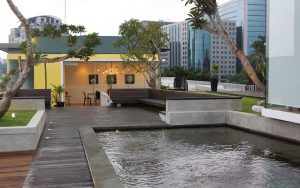
Could you give an example of a creative and practical design concept that you have conceived and delivered?
One example is the ECM Libra Investment Bank’s corporate office, which has three recycled containers resting on top of the roof and an outdoor decking amidst the greenery that is formed in a designed landscape. There are meeting rooms and collaborative areas for the executives of ECM Group, which makes the office a fun, free and enjoyable place to work in. The design extended beyond purely functional aspects and provided the space with a strong visual link and aesthetically enjoyable collaboration with the outdoors.
The challenge was to form a structure with corporate clean line, as well as incorporate all the necessary mechanical and engineering elements and rain harvesting function. We layered our creation by introducing perforated metal for the light illusion, while maintaining the concept of a unique cabin and openness. The design cultivates an energised and inspiring work environment that is relaxed but focused and buzzing with activities.
Could you highlight an instance where a climate-responsive design was implemented and how sustainable design principles were incorporated for a project in Malaysia?
ViTrox Corporation Berhad’s office does not require lights to be turned on during the daytime, even though the whole area measures more than 200,000 square feet and houses more than 400 staff. At night, all areas are equipped with self-controlled localised lighting to reduce energy usage. Lighting is confined to the stations and desks.
In order for the environment to fit the Green criteria, the indoor spaces are naturally ventilated. The outdoor landscape was designed in between the blocks, which promotes fresh airflow in indoor spaces. The town hall meeting can be held at the open courtyard that extends the seating to a four-storey balcony around the centre court, increasing its capacity to more than 500 people. All open bathrooms at every floor benefit from natural light and ventilation, including the passion fruit plantation that helps to harvest water and minimise wastage of energy and natural resources.
The company had requested for their environment to be planned and designed down to the last detail to combat global warming, in alignment with energy-saving and sustainable standards.
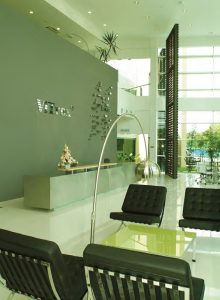
What do you think are the major challenges faced in managing thestudio and by the interior design industry in Malaysia in general?
Malaysia’s interior design industry is not regulated as a professional career, but rather as a business dealing. Interior design practices can be set up by people from different education backgrounds and many of them do not fully adhere to general regulations. Unlike many developed countries that regard interior design as a high-profile profession—for example, 20 years back when I was practicing in the USA—we require a licence and years of experience to design a project.
In Malaysia, many young designers prefer to start their own firm or be a freelancer. With such a trend, Malaysia’s market may face challenges in searching for experienced resources to deal with mega-size projects as they require actual site experience and project management skills. I could see possible crucial shortage of this experienced profession in Malaysia’s interior design climate in future.
Another aspect is that appreciative clients are essential for an interior designer. Without our trusted clients and associates from all around the globe, we will not be able to continue this journey. We are grateful for our clients who continue to support and inspire us for years.
What are the main objectives that you try to meet in every design?
We collaborate with forward-thinking clients to envision, design and build creative realisations as we believe that the spaces we create will translate to opportunities in the future.
Each client’s needs become the platform for us to conceptualise the initial proposal. We work closely with the clients over the course of the project to bring their imagination into life throughout a tangible physical environment, creating a space where people fully experience the difference and achieve their vision.
What principles are fundamental to your work ethos and culture?
We believe in energy and cultural values. We establish our team based on a strong working culture. We believe in working and designing with heart, which makes the designs unique and valuable. We encourage teamwork and group activities with everyone we care about. We set systems and encourage training, which are not only limited to design but also life, personal development and growth.
We work in an open environment that has no rooms, personal desks, hierarchies and boundaries. You do not need a room or desk when the whole office belongs to you. The space blurs the roles but not the responsibilities. This is how we work, play, eat and rest together.
Our office consists of lively activity spaces, namely library; meditation hall; function hall; art studio; inspiration corner; study; sauna spa; dipping pool; living, dining, hostel and meeting areas; integrated indoor and outdoor courtyards. We also have a small horse pet that provides opportunities for weekly outdoor activities.
What are some of the major accolades you have won and how have they motivated you?
Despite all the encounters in this journey, we stood strong and continued to pursue our mandate and design aspirations.
We were honoured with seven international design awards (IDA in the USA, RING Awards in Hong Kong and Macau) and earned 32 Malaysian interior design awards (IPDM, MSID, MIDA, IIDA and IDA in different categories of corporate offices, institutions, hotels, commercial and residential projects. In 2013, Santa Fe Interior Architecture Sdn Bhd was nominated for the Top 10 Best Interior Architecture Firm in Malaysia. In 2014, I was awarded one of the Women of Excellence in Malaysia.
We hold a strong design passion in delivering excellence. We try to be everywhere and share our inspiration.
What are your upcoming plans for 2016–2017?
For this year, we are focusing on setting and refining our platform and every system. For the coming year, we wish to have more activities and a lot of knowledge sharing. We hope to launch our long-awaited Interior Design Book and designer furniture segment.
We are also starting a platform for overseas collaborations. As an interior design judge overseas, we collaborate to bring top winners back to Malaysia this year to share global design talents and inspiration.
We also landed projects in the USA and China this year. Hopefully, they will move forward as planned in the beginning of next year. As a designer, our role is to realise people’s dreams and add value to our environment. Design is a cultural service to society.

 Hong Kong
Hong Kong Singapore
Singapore Indonesia
Indonesia Tiếng Việt
Tiếng Việt ประเทศไทย
ประเทศไทย




